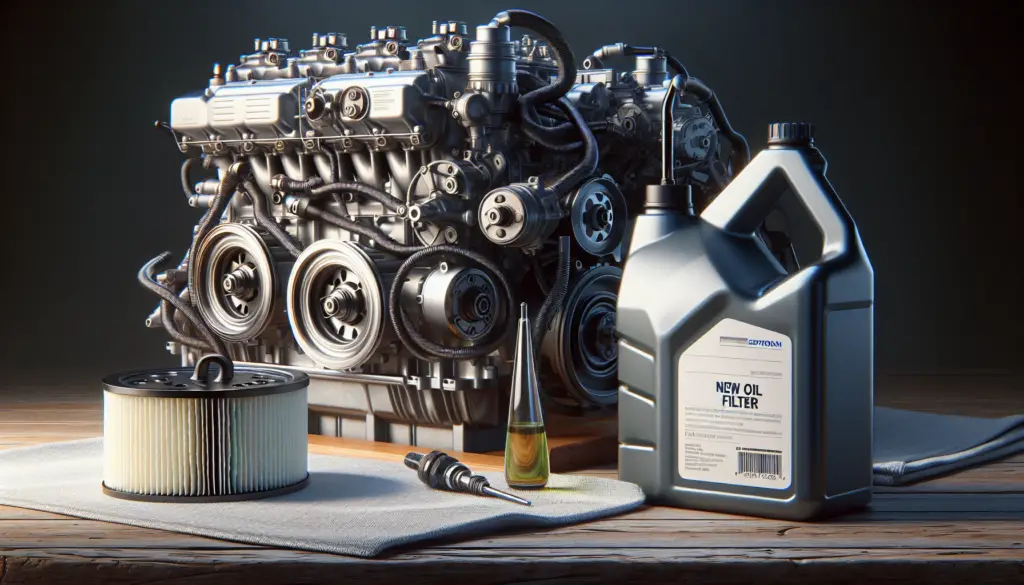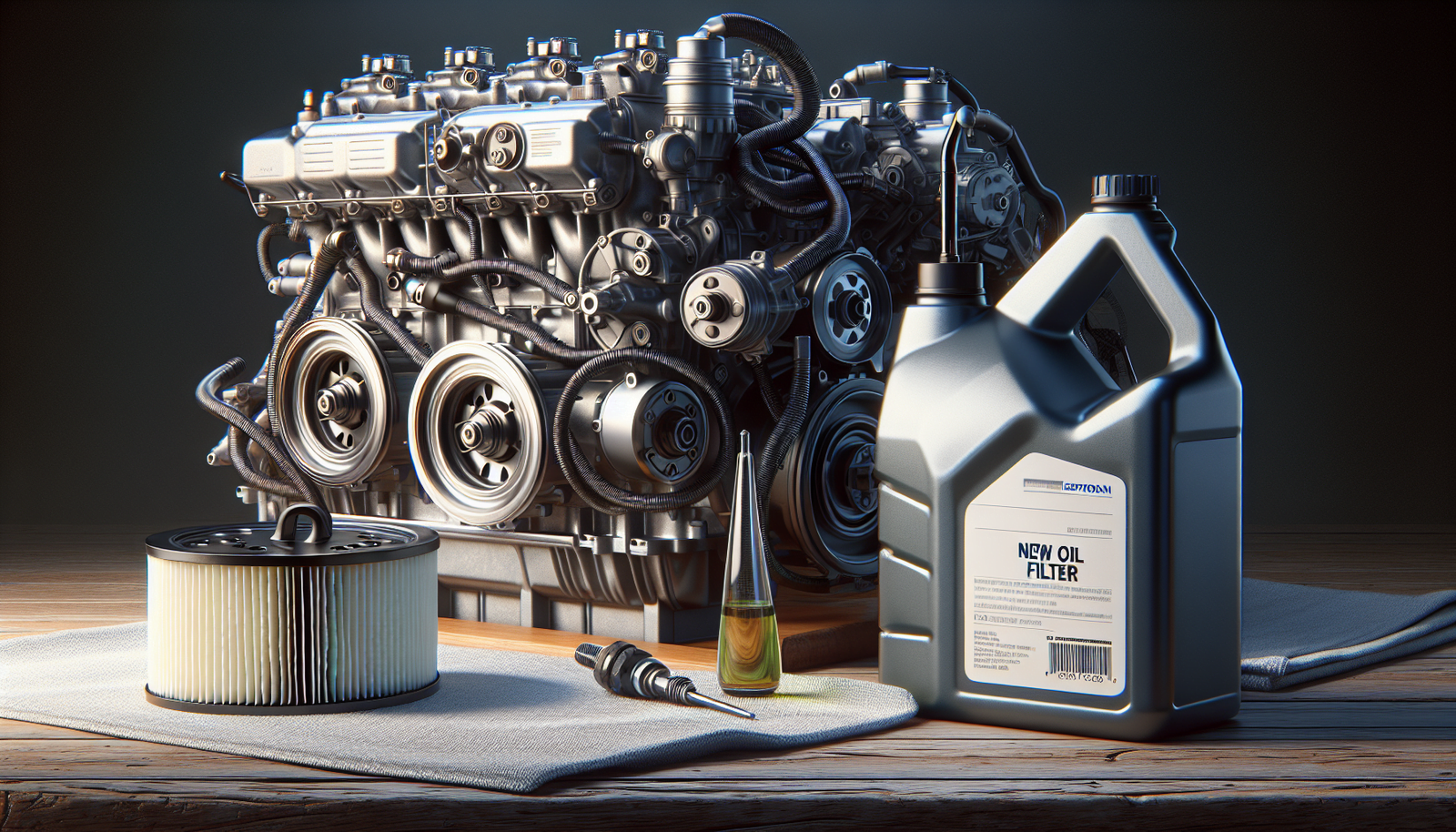Sail into smoother waters with this easy-to-follow guide on boat engine oil change. You might find yourself tangled with the daunting task of maintaining your vessel, but worry not. This article is designed for you, providing a step-by-step walk-through on how to effectively change your boat engine oil. Filled with expert tips and handy advice, you’ll soon navigate this task like a seasoned sailor and ensure your beloved boat runs smoothly and efficiently. Adventure awaits you with just a little engine upkeep!

Understanding the Importance of Regular Boat Engine Oil Change
Boat maintenance goes beyond just cleaning the exterior and ensuring it’s a seaworthy vessel – it also includes trips below deck to check on your boat’s engine. Among all the routine checks you do, one of the most important is replacing the engine oil.
Boosting engine performance
Regular oil changes are critical for your engine’s performance. clean oil ensures smoother and less resistant internal engine movement. This means that the boat engine can run more efficiently with less effort.
Increasing engine longevity
When you change the oil regularly, you reduce wear and tear on the engine components. The oil offers a protective coating that reduces friction between parts, lowering the risk of premature engine failure.
Preventing corrosion and potential damage
Oil change is important to prevent corrosion and potential damage. Over time, oil breaks down and loses its effectiveness, leaving the engine susceptible to damage from rust and corrosion. Frequent oil changes reduce such risks.
Maintaining fuel efficiency
One of the key benefits of regular oil change is that it helps maintain fuel efficiency. Old, dirty oil can cause the engine to work harder, using more fuel. With regular oil changes, you ensure the engine runs smoothly, thus using less fuel.
Identifying the Right Time for An Oil Change
Knowing when to change your boat engine oil isn’t always straightforward. Several factors come into play when determining the right time.
Checking oil condition
The condition and color of your current engine oil can tell a lot about its state. If the oil has turned dark and gritty, it is time for a change.
Assessing running hours
Boat manufacturers typically recommend an oil change after a certain number of running hours. Make sure you follow this guideline closely, changing the oil as recommended.
Considering seasonal changes
Specifically, if your boat sits idle during the colder months, it’s a good practice to change your oil before winterizing your boat, and then again when de-winterizing at the start of the boating season.
Taking account of unusual engine behaviour
Finally, if you notice any unusual engine behavior, such as strange noises or decreased performance, it might be a sign that an oil change is due.
Selecting the Right Engine Oil for Your Boat
choosing the right oil is crucial for your boat’s engine. There are several factors to consider when making this decision.
Choosing between synthetic and conventional oil
Synthetic oils are typically recommended for high-performance engine because they provide better protection and performance. However, they also cost more than conventional oils. Weigh the pros and cons before making a choice.
Understanding viscosity ratings
The viscosity of your oil will depend on the type and model of your engine. The owner’s manual of your boat will usually tell you what viscosity grade is suitable for your engine.
Ensuring compatibility with your boat’s engine type
Some oils are specifically designed for two-stroke engines and others for four-stroke engines. Always ensure that the oil is compatible with your boat’s engine type.

Gathering Required Tools and Equipment
Before you start with the oil change process, gather all the necessary tools and equipment.
Oil change pump
An oil change pump is an important tool for draining the old oil out of the engine.
Replacement oil
You’ll need enough new oil to refill the engine.
Oil filter
A new oil filter is necessary for most oil changes. always use the best filter that you can afford.
Funnel
A funnel helps to prevent spills when adding new oil.
Wrenches
Different parts of the oil change process will require the use of wrenches.
Disposable gloves
Disposable gloves keep your hands clean and offer protection against possible skin irritants or cuts.
Safety Precautions to Follow during Oil Change
Wearing safety gear
Wearing safety gear like gloves, glasses, and possibly overalls is important.
Ensuring proper ventilation
Working in a well-ventilated area is vital for safety, especially if you’re working in an enclosed room.
Avoiding oil spillage
Using a drain pan or similar container to catch the old oil will make cleanup easier and help avoid any spills.
Disposing of used oil responsibly
Used oil should always be disposed of safely. Most recycling centers or automotive parts stores accept used oil.
Draining the Old Engine Oil
Warming up the engine
Running the engine for a few minutes warms up the oil and makes it easier to drain.
Locating the drain plug
The drain plug is generally found at the bottom of the engine.
Using an oil change pump
An oil change pump is used to drain the oil from the engine.
Capturing the old oil
When draining the old oil, use a container to capture it.
Replacing the Oil Filter
Locating the oil filter
The oil filter is usually located on the side of the engine.
Unfastening the old filter
Using an oil filter wrench, unfasten the old filter.
Preparing the new filter
Before installing the new filter, apply a small amount of oil to the gasket to ensure a proper seal.
Installing the new filter
Install the new filter, ensuring it’s tightly in place.
Adding New Engine Oil
Opening the oil fill cap
This is typically located on the top of the engine.
Using a funnel to avoid spills
A funnel will help ensure you’re not spilling oil when adding it.
Pouring the new oil
Slowly pour in the new oil. Be sure to check the level occasionally to avoid overfilling.
Checking oil levels
After pouring in the new oil, check the oil levels via the dipstick.
Checking the New Oil Pressure
Starting the boat engine
Start your boat engine and let it run for a few minutes.
Monitoring oil pressure gauge
Keep a close eye on the oil pressure gauge, ensuring it doesn’t show low pressure.
Looking for leaks
Check around the engine for any signs of leaks.
Cleaning Up and Proper Disposal of Waste
Cleaning any oil spills
Clean up any spilled oil immediately.
Storing used oil in a sealable container
Ensure all the old oil is transferred into a container that seals effectively.
Locating a recycling facility or disposal site
Finally, find a local waste recycling plant or oil disposal site and drop off the used oil. This is an environmental responsibility every boater should undertake. Remember, proper maintenance extends the life of your boat and protects your investment. It also provides a safer and more enjoyable boating experience.
Keep an eye on your boat’s engine and change the oil frequently to make the most of your boating adventures. Happy sailing!

